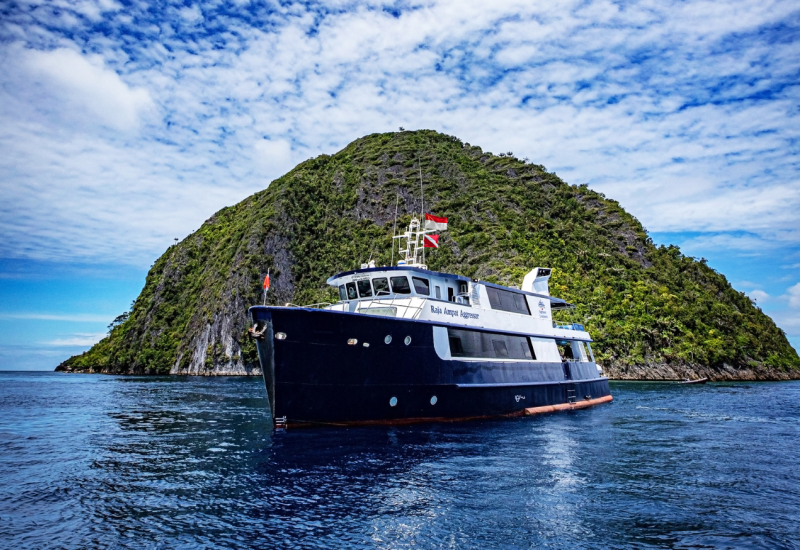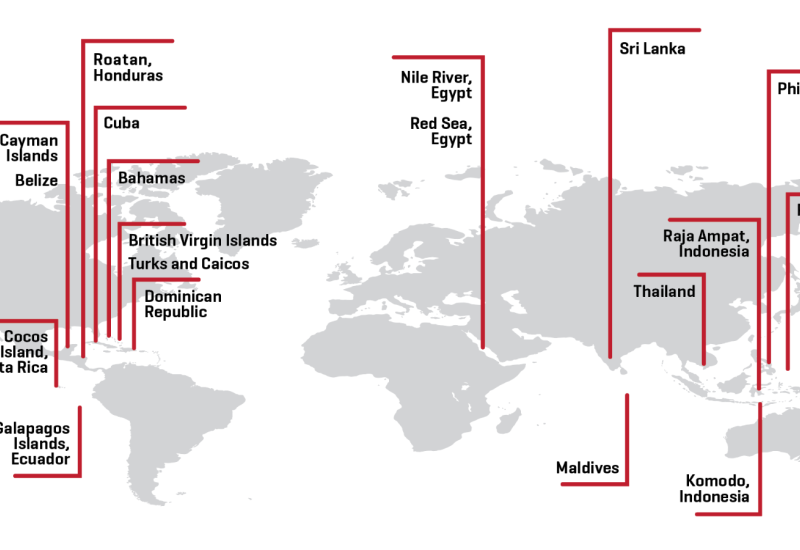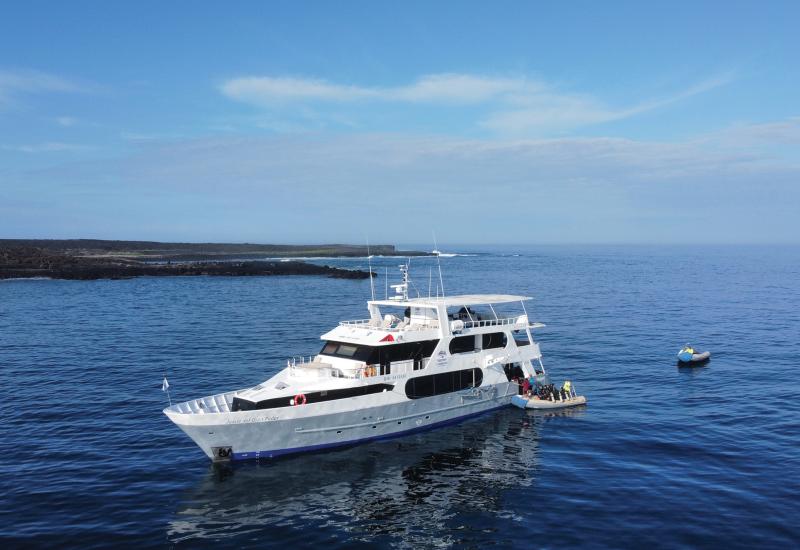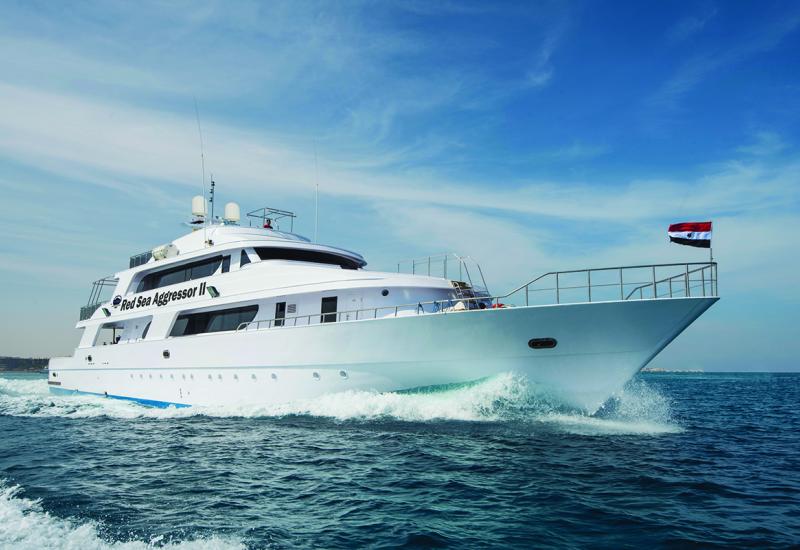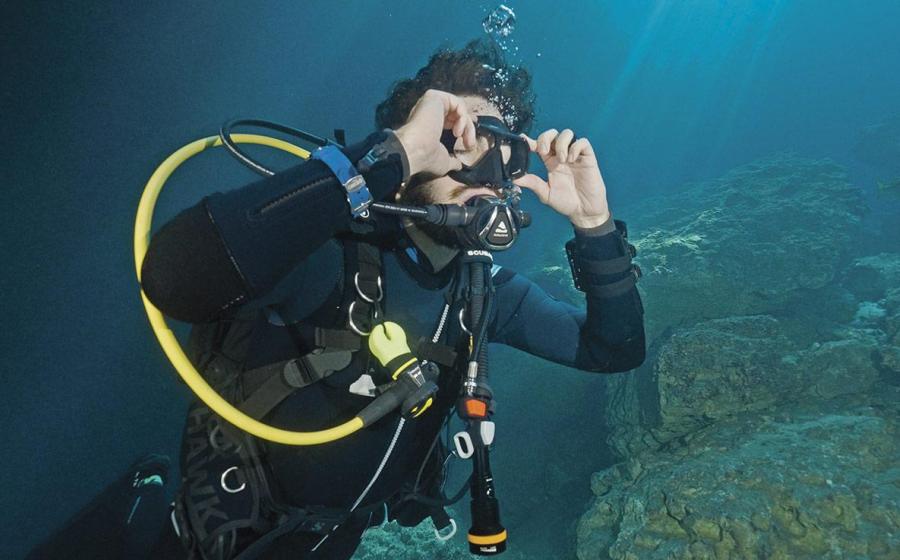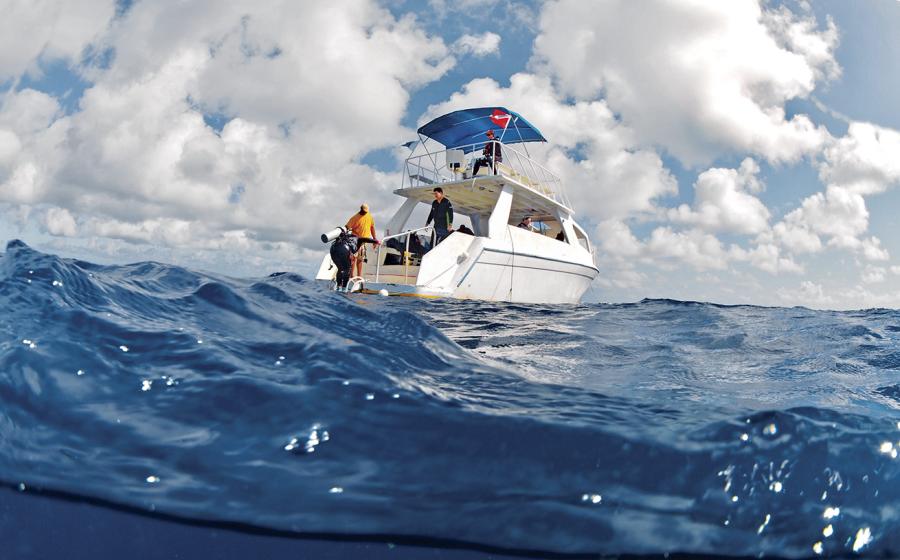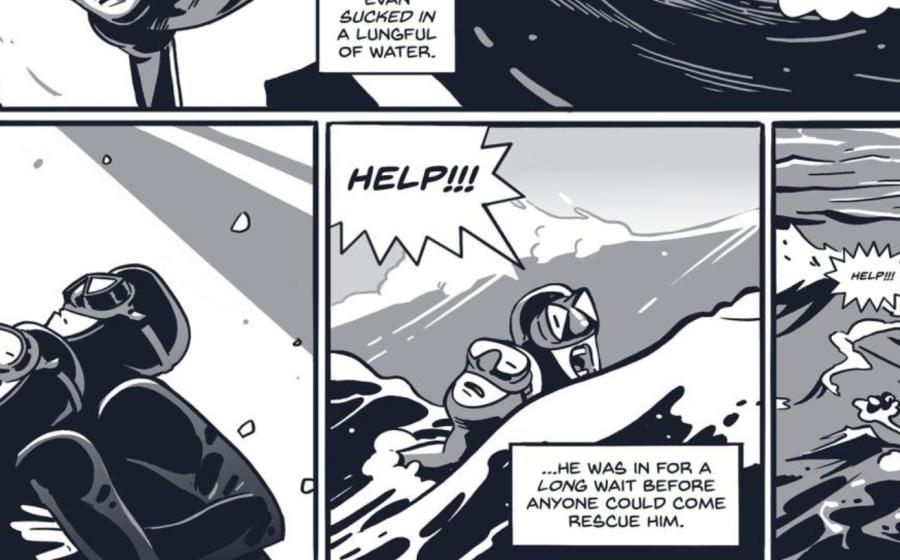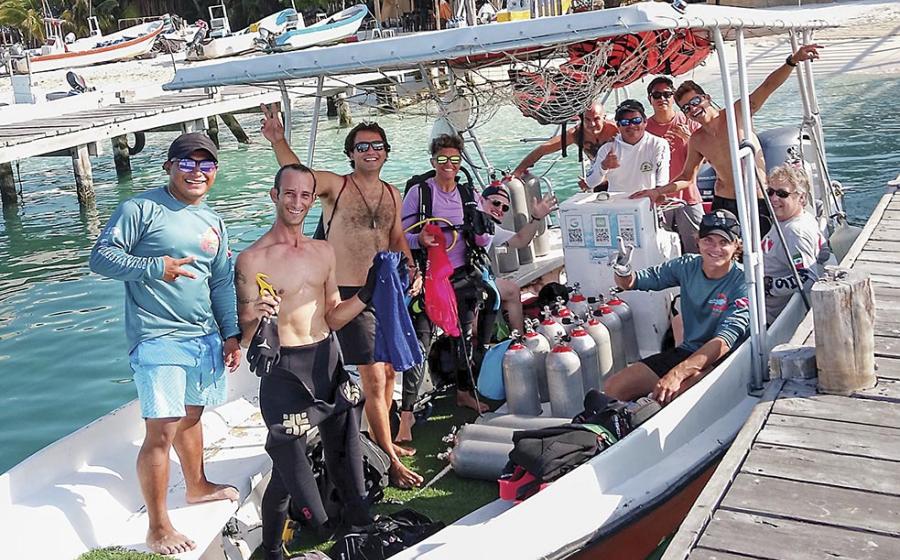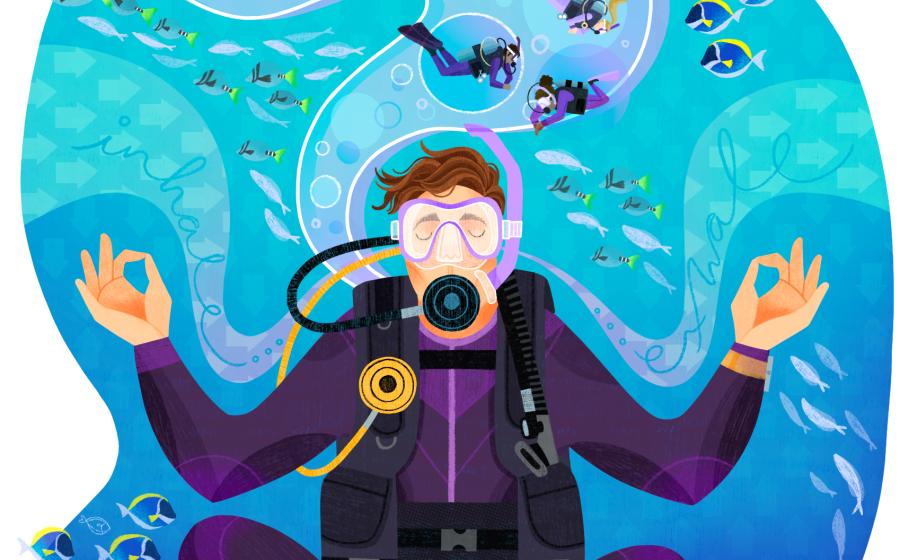Top 100 Destination: Diving in Palau
Every diver dreams of the South Pacific. The visuals are hypnotic: impossibly blue water of a thousand shades, empty beaches dotted by lazy palms, and seemingly endless fields of coral. Then there’s the marine life: neon tropical fish, giant rays, and heaps upon heaps of sharks. It’s why the South Pacific has inspired writers and painters for centuries. And Palau, the isolated Micronesian archipelago of more than 200 stunning islands, has this brand of paradise on tap. It’s no wonder our readers have historically chosen the destination as tops in the Top 100 Readers Choice Awards for the best walls, wrecks, marine life and overall diving.
Vast Variety
Like wall dives? Check. Fan of giant wrecks? Check. Got a thing for caverns and tunnels? Check. Ripping drift dives pump your adrenaline? Check. Just want to float above a coral garden? Check. One of Palau’s outstanding qualities is its diversity. With around 250 islands, there’s something for every breed of diver. Except for ice diving, that is.
Magic Islands
Like giant button mushrooms capped in foliage, the limestone formations in the Rock Islands number in the hundreds, creating a landscape that juxtaposes brilliant green against stunning blue. Some feature arches. Some hide beaches. And others harbor dark caverns, World War II relics, mangrove forests and other wonders. There’s no telling what’s around each new corner. Racing through a maze of them in a dive skiff is a thrill to remember.
Reef Hooking
There are plenty of arguments over who was the first diver to develop the reef-hook system. But there’s no better place to employ the hook-and-line system than in the swift currents of sites like Blue Corner, Saies Corner and New Drop Off. Safely tethered to a nonliving spot on the reef, divers can dangle in the flow like a kite on a string, as sharks, barracuda, jacks, wrasse and other current-loving species hunt in the blue.
Jellyfish Lake
A bizarre, geological anomaly is responsible for one of the most amazing dive (er … snorkel) sites on the planet. Nestled in the middle of Eil Malk Island is Jellyfish Lake, a small body of brackish water protected from the surrounding lagoon by tall hills of dense jungle. Inside, the main attraction is the community of millions of golden jellies that over the eons have devolved the biological need to sting. Today, humans can frolic with the jellies, which migrate across the lake each day following the sun, in (virtually) painless bliss.
Shark Parade
How many shark sightings make an amazing dive? If you answered one, then prepare to have your mind blown. At such landmark sites as Blue Corner, Ulong Channel, Saies Corner, Peleliu Express and Shark City, it’s not uncommon for divers to witness 20, 30 even 50 grey reef, blacktip, whitetip and other sharks on a single dive, cruising in the current along a plunging wall of the swift-moving channel. The action isn’t a Pavlovian response to a bait box full of chum: This is real wild behavior.
Chandelier Cave
You don’t need to be cave certified to enjoy one of the world’s most unique cavern dives. Formed by a combination of eroding rainwater, irresistible tides and grazing invertebrates, Chandelier Cave is a five-room system that boasts dramatic formations and easy access. Stalactites hang from the tall ceiling, where air pockets allow divers to surface to examine veins of minerals in the limestone walls. Marine life is scarce, but keen explorers can find shrimp and cardinalfish hiding in cracks and crevices. The best view, however, can be seen as you exit the cavern into a bright-blue opening behind silhouetted divers.
World War II Wrecks
During Operation Desecrate One in March 1944, the U.S. Navy sank dozens of Japanese war and supply ships anchored around Palau. Sixty years later, divers can explore the coral-crusted remains of these historic shipwrecks, examining artifacts ranging from unused shells and bullets to gas masks, sake bottles, and much more. Some of the most interesting include the Iro, Chuyo Maru , Helmet Wreck, Bichu Maru and Jake Seaplane. The torture of bombing has transformed many of these proud ships into strange underwater sculptures, but they all are major attractors for a wide variety of marine life, offering a compelling experience for history fans and critter lovers alike.
Dancing Mantas
Palau’s German Channel is a hot spot for feeding mantas, one of the island nation’s signature underwater shows. East of Ngemelis Island, the channel funnels water from an inner lagoon into deep water, creating currents that flush plankton-rich water into the open mouths of foraging manta rays. Divers park at about 60 feet, where a busy cleaning station lures large numbers of the graceful creatures, along with pelagic fish and plenty of sharks.
NEED TO KNOW
When to Go: Palau’s diving is great year-round. Water temperature varies only a few degrees from the low 80s to the mid-70s F.
Travel Tip: Airlift onto this isolated island from the West is limited. United’s (formerly Continental’s) Honolulu-Guam-Koror route is one of the longest running and most consistent routes in the region.
Dive Conditions: Visibility can consistently reach beyond 100 feet, but it can also be diminished by weather and tides at certain spots.
ITINERARY
Eat: Don’t be shy, try the local fruit bat soup. It’s an aromatic, clear broth featuring a whole bat (fur and all) that’s been stewed to incredible tenderness — and boasting a flavor unlike anything you’ve ever had before.
Drink: “Dive Bar” might be our tribe’s favorite cliché, but the Bottom Time Bar & Grill at Sam’s Tours will refine your definition. Steps from the dive boats, it touts locally brewed Red Rooster craft beer on tap, fresh seafood, and a fantastic muck dive right off the dock.
Sleep: For major pampering with true South Pacific flair, the Palau Pacific Resort is the most luxurious resort on the island of Koror, offering the island’s sexiest white-sand beach, generous accommodations, and the friendliest staff you’ll ever meet.
More from the Readers Choice Awards:
Every diver dreams of the South Pacific. The visuals are hypnotic: impossibly blue water of a thousand shades, empty beaches dotted by lazy palms, and seemingly endless fields of coral. Then there’s the marine life: neon tropical fish, giant rays, and heaps upon heaps of sharks. It’s why the South Pacific has inspired writers and painters for centuries. And Palau, the isolated Micronesian archipelago of more than 200 stunning islands, has this brand of paradise on tap. It’s no wonder our readers have historically chosen the destination as tops in the Top 100 Readers Choice Awards for the best walls, wrecks, marine life and overall diving.

Brandon ColeWith over 250 islands Palau offers abundant diversity in types of diving and marine life.
Vast Variety
Like wall dives? Check. Fan of giant wrecks? Check. Got a thing for caverns and tunnels? Check. Ripping drift dives pump your adrenaline? Check. Just want to float above a coral garden? Check. One of Palau’s outstanding qualities is its diversity. With around 250 islands, there’s something for every breed of diver. Except for ice diving, that is.
Magic Islands
Like giant button mushrooms capped in foliage, the limestone formations in the Rock Islands number in the hundreds, creating a landscape that juxtaposes brilliant green against stunning blue. Some feature arches. Some hide beaches. And others harbor dark caverns, World War II relics, mangrove forests and other wonders. There’s no telling what’s around each new corner. Racing through a maze of them in a dive skiff is a thrill to remember.

Brandon ColeSeemingly endless fields of coral await divers in Palau.
Reef Hooking
There are plenty of arguments over who was the first diver to develop the reef-hook system. But there’s no better place to employ the hook-and-line system than in the swift currents of sites like Blue Corner, Saies Corner and New Drop Off. Safely tethered to a nonliving spot on the reef, divers can dangle in the flow like a kite on a string, as sharks, barracuda, jacks, wrasse and other current-loving species hunt in the blue.
Jellyfish Lake
A bizarre, geological anomaly is responsible for one of the most amazing dive (er … snorkel) sites on the planet. Nestled in the middle of Eil Malk Island is Jellyfish Lake, a small body of brackish water protected from the surrounding lagoon by tall hills of dense jungle. Inside, the main attraction is the community of millions of golden jellies that over the eons have devolved the biological need to sting. Today, humans can frolic with the jellies, which migrate across the lake each day following the sun, in (virtually) painless bliss.

Brandon ColeDivers can reef hook on a nonliving spot on the reef and watch a parade of marine life cruise by.
Shark Parade
How many shark sightings make an amazing dive? If you answered one, then prepare to have your mind blown. At such landmark sites as Blue Corner, Ulong Channel, Saies Corner, Peleliu Express and Shark City, it’s not uncommon for divers to witness 20, 30 even 50 grey reef, blacktip, whitetip and other sharks on a single dive, cruising in the current along a plunging wall of the swift-moving channel. The action isn’t a Pavlovian response to a bait box full of chum: This is real wild behavior.
Chandelier Cave
You don’t need to be cave certified to enjoy one of the world’s most unique cavern dives. Formed by a combination of eroding rainwater, irresistible tides and grazing invertebrates, Chandelier Cave is a five-room system that boasts dramatic formations and easy access. Stalactites hang from the tall ceiling, where air pockets allow divers to surface to examine veins of minerals in the limestone walls. Marine life is scarce, but keen explorers can find shrimp and cardinalfish hiding in cracks and crevices. The best view, however, can be seen as you exit the cavern into a bright-blue opening behind silhouetted divers.

Michael GerkenGiant rays are among the wide array of marine life roaming Palau.
World War II Wrecks
During Operation Desecrate One in March 1944, the U.S. Navy sank dozens of Japanese war and supply ships anchored around Palau. Sixty years later, divers can explore the coral-crusted remains of these historic shipwrecks, examining artifacts ranging from unused shells and bullets to gas masks, sake bottles, and much more. Some of the most interesting include the Iro, Chuyo Maru , Helmet Wreck, Bichu Maru and Jake Seaplane. The torture of bombing has transformed many of these proud ships into strange underwater sculptures, but they all are major attractors for a wide variety of marine life, offering a compelling experience for history fans and critter lovers alike.
Dancing Mantas
Palau’s German Channel is a hot spot for feeding mantas, one of the island nation’s signature underwater shows. East of Ngemelis Island, the channel funnels water from an inner lagoon into deep water, creating currents that flush plankton-rich water into the open mouths of foraging manta rays. Divers park at about 60 feet, where a busy cleaning station lures large numbers of the graceful creatures, along with pelagic fish and plenty of sharks.

Gerald NowakThe Jake Seaplane encrusted in coral.
NEED TO KNOW
When to Go: Palau’s diving is great year-round. Water temperature varies only a few degrees from the low 80s to the mid-70s F.
Travel Tip: Airlift onto this isolated island from the West is limited. United’s (formerly Continental’s) Honolulu-Guam-Koror route is one of the longest running and most consistent routes in the region.
Dive Conditions: Visibility can consistently reach beyond 100 feet, but it can also be diminished by weather and tides at certain spots.
ITINERARY
Eat: Don’t be shy, try the local fruit bat soup. It’s an aromatic, clear broth featuring a whole bat (fur and all) that’s been stewed to incredible tenderness — and boasting a flavor unlike anything you’ve ever had before.
Drink: “Dive Bar” might be our tribe’s favorite cliché, but the Bottom Time Bar & Grill at Sam’s Tours will refine your definition. Steps from the dive boats, it touts locally brewed Red Rooster craft beer on tap, fresh seafood, and a fantastic muck dive right off the dock.
Sleep: For major pampering with true South Pacific flair, the Palau Pacific Resort is the most luxurious resort on the island of Koror, offering the island’s sexiest white-sand beach, generous accommodations, and the friendliest staff you’ll ever meet.
More from the Readers Choice Awards:
Top 100 | Spotlight: Maui | Spotlight: Grand Cayman

